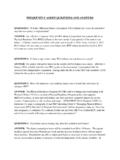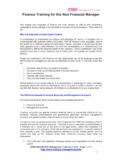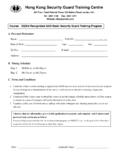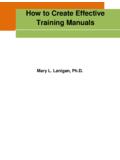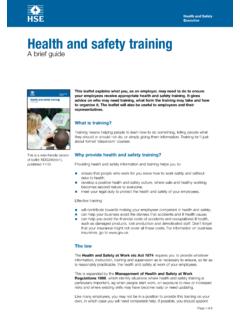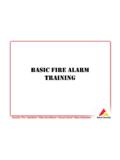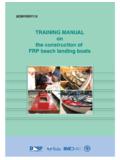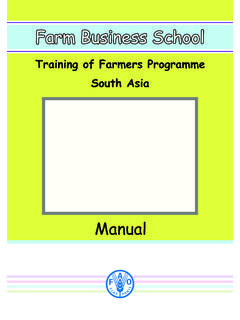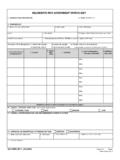Transcription of U.S. N AVY - 2018
1 NAVY. personal training plan . Thisbooklet This bookletisisaacomponent component ofof the the Physical Physical Fitness Enhancement Initiative Initiative by by the the Navy Environmental Health Center. wasdevel- devel- oped opedin cooperation with incooperation with the the Cooper Cooper Institute for Aerobics Aerobics Research;. Research, Dallas, Dallas,Texas. Texas. Reviewed and Approved Buck Commanding Officer Navy personal training plan (NEHC-TM , October 1998). NAVY. personal training plan . TABLE OF CONTENTS. Acknowledgments .. 2. Physical Fitness Overview .. 4. Stretching/Injury Prevention .. 6. Cardiovascular Fitness .. 8. Aerobics Points System .. 9. Aerobic Points for Running and Walking .. 10. Aerobic Points for Swimming .. 11. Muscular Strength & Endurance.
2 12. Caution About Ergogenic Aids .. 13. Navy Contacts .. Back Cover PHYSICAL FITNESS OVERVIEW. Physical fitness is an essential and critical component of readiness. Fitness is much more than the absence of disease. It is a state of being that includes strong, flexible muscles and an efficient system for getting oxygen and nutrients to the body. Muscular strength and endurance activities help your muscles become stronger, giving them both the raw strength and ability to work repeatedly without undue fatigue. Flexibility or stretching exercises are necessary to prevent injury to the muscles and joints, and to allow the muscles to work efficiently through a full range of motion. Cardiovascular activities, such as running and swim- ming, help the heart, lungs and blood vessels become more effective at delivering to the muscles what they need to function oxygen and glucose.
3 Physical fitness is a state of being that must be maintained. You have to specifically exercise the muscles and joints where you want improvement. It is both a 44. science and an art, requiring effort and balance. It is also achievable by everyone, despite body type, family health history, and past habits. You may or may not be ready to make all the changes it takes to achieve maximum fitness, but you're probably ready to do something. Each day, do what you can walk around the block, do a few push-ups, do some of the stretching exercises shown on page 7. And on days when you aren't able to get moving, don't get discouraged. Just plan ahead for the next day. Building new habits, even positive ones, takes some work, so don't get discouraged by temporary setbacks.
4 Physical fitness can be achieved working by yourself, with your family, or with your friends. Many people find working out with a partner to be motivating. Find someone who is at about the same fitness level as you, and jointly make a commitment. 5. STRETCHING/INJURY PREVENTION. Stretching is important for everyone, from the Olympic athlete to the most committed couch potato. Stretching makes the muscles, ligaments and tendons more flexible and elastic-like. Rather than tearing or breaking when under strain, a flexible muscle is more likely to stretch and give. Flexibility prevents injuries, like back injuries and sprained ankles, and helps you perform everyday tasks with greater ease. Stretching is joint specific you have to target each muscle group and joint separately.
5 The stretches on page 7. should be done at least 5 days a week, and every day is better. Develop a routine where you do each stretch 1 to 3. times for at least 10 to 30 seconds. Set aside time and get in the habit of doing them. It's best to warm up first by walking, jogging, etc. for 3 to 5 minutes. Then stretch. Afterwards do your workout or play your sport, like softball, volleyball, or basketball. Then stretch again after you've cooled down and your heart rate is almost back to normal. Never stretch a cold muscle. Always warm up first! Also, always do slow static stretching. Don't swing or bounce. Stretch until you feel tension, but not pain. 66. Neck Stretch Upper Back Stretch Triceps Stretch Chest & Biceps Stretch Butterfly (Groin) Calf Stretch Stretch Hamstring Stretch Lower Back Stretch Quadriceps Stretch (1 knee).
6 Back Extension Stretch 7. CARDIOVASCULAR FITNESS. Cardiovascular fitness is the result of doing activities that exercise your heart, lungs and blood vessels. The type activity you need to achieve cardiovascular fitness is aerobic, which uses large muscle groups at an intensity that can be sustained for a long period of time. Activities such as running, jogging, brisk walking, stair climbing, rowing, swimming, aerobic dance, and bicycling should make you work hard enough that you're breathing harder and perspiring some. A good rule of thumb is that you can carry on a light conversation, but can't sing. A more exact way to gauge your intensity is to aim for your target heart rate. If you don't know how to determine what your heart rate should be, ask your PRT.
7 Coordinator or a fitness professional to help. Your workout should last at least 20 minutes, not including your warm-up, cool down, or stretching. To be sure you're getting a good workout, follow the FITT Principle: F Frequency: 3-5 times a week I Intensity: Target Heart Rate, or Talk but can't Sing T Time: 20 to 60 minutes of aerobic activity T Type of Activity: Something you enjoy 88. EXPLANATION OF AEROBICS POINTS SYSTEM. On the following two pages is a listing for aerobic points you can earn by walking, running or swimming. The points were developed, along with scoring for many other activities, by Dr. Kenneth Cooper, and first appeared in his best-seller book Aerobics. The system was updated in Dr. Cooper's 1982 book The Aerobics Program for Total Well-Being.
8 The points are the same for men and women. Your goal should be to work up to earning at least 30. points per week. You may not be there now. If not, be patient. If you're interested in activities other than walking, running or swimming, or in other distances and times, refer to The Aerobics Program for Total Well-Being. To record your points, get a small calendar or note- book. Each day, record your activity and how many points you earned. Your personal goals will depend on what you want to accomplish. If training for a sporting event, your goals will be higher than if you are just beginning to work out. Just 10 points a week will result in significant improvements for the previously sedentary person. The athlete may earn 100 or more points a week.
9 A reasonable goal is to earn 6 points five days a week. 9. COOPER AEROBICS POINTS FOR RUNNING/FAST WALKING. (MEN AND WOMEN). mile miles over 20:01 min .. 0 over 1hr 1 sec .. 2. 20:00 - 15:01 min .. 1 1:00:00 - 45:01 min .. 5. 15:00 - 12:01 min .. 2 45:00 - 36:01 min .. 8. 12:00 - 10:01 min .. 3 36:00 - 30:01 min .. 11. 10:00 - 8:01 min .. 4 30:00 - 24:01 min .. 14. 8:00 - 6:41 min .. 5 24:00 - 20:01 min .. 17. 6:40 - 5:44 min .. 6 20:00 - 17:10 min .. 20. under 5:43 min .. 7 under 17:09 min .. 23. miles miles over 45:01 min .. 0 over 1:20:01 .. 3. 45:00 - 30:01 min .. 1/2 1:20:00 - 1:00:01 .. 7. 30:00 - 22:31 min .. 2 1:00:00 - 48:01 min .. 11. 22:30 - 18:01 min .. 31/2 48:00 - 40:01 min .. 15. 18:00 - 15:01 min .. 5 40:00 - 32:01 min .. 19. 15:00 - 12:01 min.
10 61/2 32:00 - 26:41 min .. 23. 12:00 - 10:01 min .. 8 26:40 - 22:53 min .. 27. 10:00 - 8:35 min .. 91/2 under 23:00 min .. 31. under 8:34 min .. 11 miles miles over 1:40:01 .. 4. over 40:01 min .. 1 1:40:00 - 1:15:01 .. 9. 40:00 - 30:01 min .. 3 1:15:00 - 1:00:01 .. 14. 30:00 - 24:01 min .. 5 1:00:00 - 50:01 min .. 19. 24:00 - 20:01 min .. 7 50:00 - 40:01 min .. 24. 20:00 - 16:01 min .. 9 40:00 - 33:21 min .. 29. 16:00 - 13:21 min .. 11 33:20 - 28:35 min .. 34. 13:20 - 11:27 min .. 13 under 28:34 min .. 39. under 11:26 min .. 15 miles miles over 2:00:01 .. 5. over 50:01 min .. 11/2 2:00:00 - 1:30:01 .. 11. 50:00 - 37:31 min .. 4 1:30:00 - 1:12:01 .. 17. 37:30 - 30:01 min .. 61/2 1:12:00 - 1:00:01 .. 23. 30:00 - 25:01 min .. 9 1:00:00 - 48:01 min.



